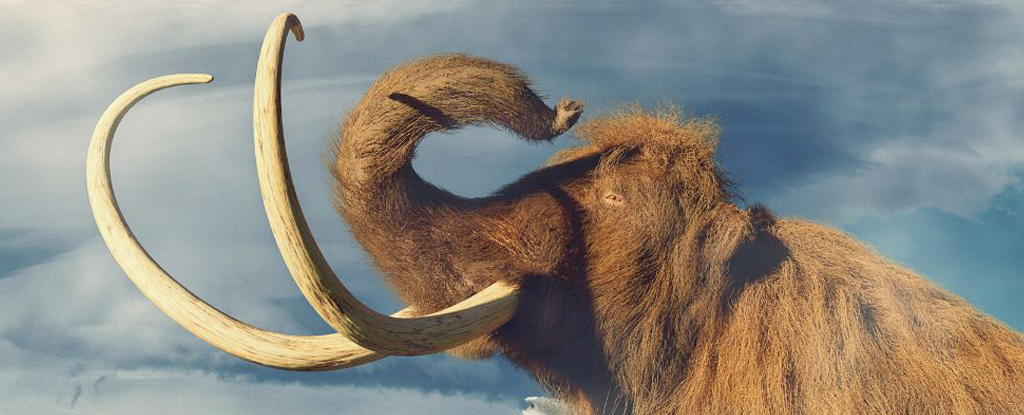Products You May Like
About 14,000 years ago, the tusk of a 20-year-old female mammoth ended up at a campsite in Swan Point, Alaska.
How the tusk got there will likely remain a mystery – perhaps the campsite owners hunted her, or came across her remains and took the tusk home with them.
Fortunately for us, the extinct mammoths’ (Mammuthus primigenius) life journey is written in the chemistry of their bones. The tale told by this one specimen – named Élmayuujey’eh by the local counsil – could help us better understand how others of her kind lived and died.
“She was a young adult in the prime of life,” explains University of Alaska Fairbanks paleoecologist Matthew Wooller.
“Her isotopes showed she was not malnourished and that she died in the same season as the seasonal hunting camp at Swan Point where her tusk was found.”
Like rings of a tree, each layer of her tusk records another page of the mammoth’s life, written in the language of charged atoms known as isotopes. Extracting and analyzing the ratios of differently flavored isotopes revealed Élmayuujey’eh originated from Canada.
She spent most of her life there in Yukon, before traveling roughly 1,000 kilometers (621 miles) in just three years.
Élmayuujey’eh was related to other mammoths found at the Alaskan hunting site, including a closely related baby and a juvenile. But she was not related to some other mammoths found nearby, reinforcing the isotope evidence that she migrated, along with a family herd it seems.
Her new home was an area in Alaska with the highest density of archeological sites, up to 20,000 years old, belonging to the first human migrants from Eurasia, who traveled across the Beringian land bridge that existed during the glaciation period.
The team compared her journey to a previously studied male mammoth, thousands of years older than her. While he traveled a lot more than she did, as expected based on the behaviors of modern elephants, he frequented and migrated across overlapping areas.
“The cooccurrence of both human and mammoth hotspot areas on the Beringian landscape is probably not coincidental,” the researchers believe. “It more likely demonstrates people’s purposeful and strategic intent to map their behavior onto that of a mobile but highly visible and predictable megafaunal resource.”
Debate around what caused the wooly mammoth’s extinction continues. There’s some indication humans hunted them out of existence as with other megafauna, but other signs point to climate change.
If humans were indeed following the giant herbivores herds to hunt them, this likely contributed to the massive herbivores demise, along with the shifting climate around them.
Today some researchers are proposing we reverse wooly mammoth extinction in an attempt to mitigate climate change through massive-scale rewilding. But if we dare attempt such a thing, we’d need a heck of a lot more information about these animals’ behavior, which further studies like this one could provide.
“This is a fascinating story that shows the complexity of life and behavior of mammoths, for which we have very little insight,” says McMaster University evolutionary geneticist Hendrik Poinar.
This research was published in Science Advances.
